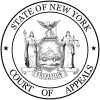MacPherson v. Buick Motor Co.
| MacPherson v. Buick Motor Co. | |
|---|---|
 |
|
| Court | New York Court of Appeals |
| Full case name | Donald C. MacPherson v. Buick Motor Company |
| Argued | January 24 1916 |
| Decided | March 14 1916 |
| Citation(s) | 111 N.E. 1050, 217 N.Y. 382 |
| Case history | |
| Prior action(s) | Judgment for plaintiff, Sup. Ct.; aff'd, 160 A.D. 55 (3d Dep't 1914) |
| Holding | |
| An automobile manufacturer's liability for a defective product extended beyond the immediate purchaser. Appellate Division affirmed. | |
| Court membership | |
| Chief Judge | Willard Bartlett |
| Associate Judges | Frank H. Hiscock, Emory A. Chase, William H. Cuddeback, John W. Hogan, Benjamin N. Cardozo, Cuthbert W. Pound |
| Case opinions | |
| Majority | Cardozo, joined by Hiscock, Chase, Cuddeback |
| Concurrence | (without separate opinion) Hogan |
| Dissent | Bartlett |
| Pound took no part in the consideration or decision of the case. | |
MacPherson v. Buick Motor Co., 217 N.Y. 382, 111 N.E. 1050 (1916) is a famous New York Court of Appeals opinion by Judge Benjamin N. Cardozo which removed the requirement of privity of contract for duty in negligence actions.
The plaintiff, Donald C. MacPherson, a stonecutter, was injured when one of the wooden wheels of his 1909 "Buick Runabout" collapsed. The defendant, Buick Motor Company, had manufactured the vehicle, but not the wheel, which had been manufactured by another party but installed by defendant. It was conceded that the defective wheel could have been discovered upon inspection. The defendant denied liability because the plaintiff had purchased the automobile from a dealer, not directly from the defendant.
In the earlier precedent, duty was imposed on defendants by voluntary contract via privity as in the English case of Winterbottom v. Wright. This is the precursor rule for product liability. The portion of the MacPherson opinion in which Cardozo demolished the privity bar to recovery is as follows:
If the nature of a thing is such that it is reasonably certain to place life and limb in peril when negligently made, it is then a thing of danger. Its nature gives warning of the consequence to be expected. If to the element of danger there is added knowledge that the thing will be used by persons other than the purchaser, and used without new tests, then, irrespective of contract, the manufacturer of this thing of danger is under a duty to make it carefully. That is as far as we need to go for the decision of this case . . . . If he is negligent, where danger is to be foreseen, a liability will follow.
...
Wikipedia
